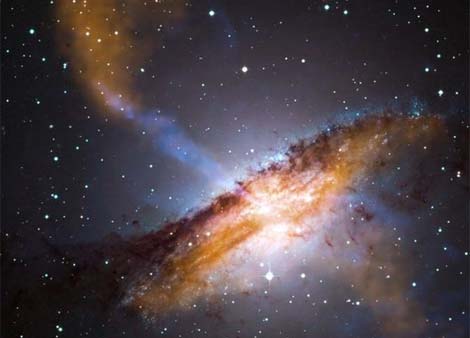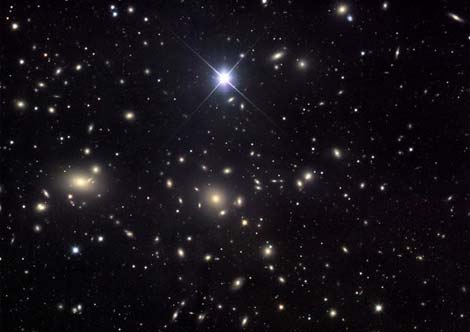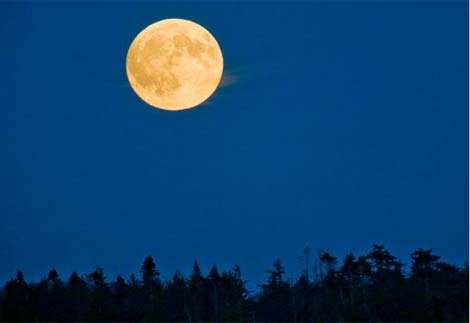The most outstanding cosmic discoveries in 2010
In 2010, many remarkable secrets about the universe were discovered as every black hole contained a universe, the end of time, found a new earth . Here are 10 discoveries about the universe. Most notable this year, according to the poll of the prestigious National Geographic magazine.
1. Do all black holes contain a universe?

Like the Matrioska doll (Russia), our universe may lie inside a black hole and envelop that black hole as a larger universe. That was the statement of Nikodem Poplawski of Indiana University in Bloomington (USA) in a study published in April this year. Therefore, the black hole found in our universe has historically been the door to entering a smaller universe.
2. The mystery of the "structure" in outer space

In 2010, scientists discovered that the dark flow expanded beyond imagination compared to previous reports with a range of more than 2.5 billion light-years from Earth. Previously, in 2008, scientific studies also speculated that hundreds of galactic assemblies were moving in the same direction at a rate of 3.6 million km / h.
These movements cannot be explained by existing cosmological models. Therefore, the researchers propose an explanation that is still controversial, that the galactic clusters are attracted by the gravitational pull of a known outer universe.
3. The brightest and brightest moon in 2010

On the evening of January 29, 2010, the Moon is closest to Earth, so we see it the biggest and brightest in 2010. Every year the moon approaches the point once or twice when it round. That coincidence occurred at the end of January, making the Moon 14% bigger and 30% brighter than the other full moon times of the year.
The moon is 384,403 km from the earth and revolves around our planet on an elliptical orbit near the circle with the closest point 363.104 km and the farthest point from 405,696 km. The cycle of orbit around Earth is about 27,321 days.
4. Solar storms cause strange aurora

In early August 2010, NASA's Solar Dynamics Observatory telescope recorded optical aberrations with strange shapes in the northern sky caused by plasma clouds from the solar storm. Aurora is an optical phenomenon with the expression of the color of light in the sky at night.
These bands of light constantly move and change, making them look like light strips of silk in the sky. The aurora occurs when charged particles in the plasma gas interact with the earth's magnetic field, causing plasma clouds to be attracted to the terminal and colliding with nitrogen and oxygen atoms.
5. Meteors fall to Earth

A cosmic stone measuring 1.8 meters and a capacity of about 450 kg crashed into the Earth's atmosphere in an area of Wisconsin, Iowa, Illinois and Missouri (USA) on the evening of April 14, 2010. This collision created a loud explosion and bright spots in the sky. However, this cosmic stone was burned in the atmosphere and did not cause any damage.
6. Found a new Earth?

Last October, scientists from the University of California and the Carnegie Institute (USA) discovered a new planet with the most Earth-like habitat ever. The same sized planet Earth is named Gliese 581g. It has orbit around the star in the constellation Libra in the universe. Scientists believe that water can exist on the surface of this planet.
Planet Gliese 581g is about 20 light-years away from our Earth and has an orbit of about 37 days / round. Due to the attraction of the star Gliese 581g revolves around, the planet has half the time of day and the remaining half is night.
7. End point of Time

In October 2010, physicists at the University of California (USA) conjectured that our universe is just one of the countless universes and they claim, the time in our universe will end in 5 billion years. Currently, our universe has existed for 14 billion years.
8. Space astronauts have a detached nail when in space

A study published in September 2010 shows that astronauts are prone to peeling their hands after each walk in space. The reason is because the pressure difference between the atmosphere outside the glove and inside the glove is very large when they are in space. To avoid this injury, scientists recommend astronauts not to wear long nails or wear fake nails to protect them.
9. Hubble telescope finds the oldest galaxy

The new Hubble telescope has a wide-range camera that captures the image of this unprecedented galaxy. Scientists believe that these galaxies were formed 500 million years after the Big Bang. Currently, this galaxy is about 1.5 million years old - older than any other galaxy in the universe discovered until now.
10. Perseid meteor shower

Perseid meteor shower usually takes place in mid-August every year. When meteor shower takes place, a giant cloud of different sized dust particles of comet Swift-Tuttle rushes into the Earth's atmosphere at a speed of 160,000 km / h creating shock waves. These waves compress the air particles in front of it, causing the temperature to rise to thousands of degrees Celsius, and quickly ignite the formation of long light trails in the sky.
- 5 most outstanding scientific discoveries in 2013
- 10 outstanding scientific discoveries in 2008
- The most outstanding cosmic photos last week
- New discoveries are making NASA's hopes of conquering Mars difficult to succeed
- NASA creates cosmic dust in the laboratory
- New method of dating: One of 10 outstanding discoveries of the year
- 10 forgotten archaeological discoveries have been found again
- The American newspaper honors the study of Vietnamese mathematicians
- Europe studies the project of clearing cosmic garbage
- Cosmic garbage!
- Things you don't know about cosmic rays
- Use smartphones to 'catch' cosmic radiation
 Van Allen's belt and evidence that the Apollo 11 mission to the Moon was myth
Van Allen's belt and evidence that the Apollo 11 mission to the Moon was myth The levels of civilization in the universe (Kardashev scale)
The levels of civilization in the universe (Kardashev scale) Today Mars, the sun and the Earth are aligned
Today Mars, the sun and the Earth are aligned The Amazon owner announced a secret plan to build a space base for thousands of people
The Amazon owner announced a secret plan to build a space base for thousands of people